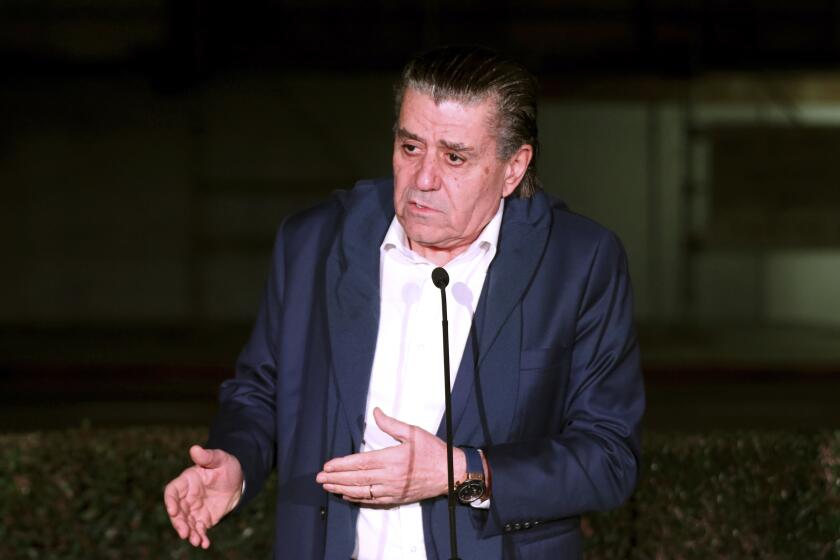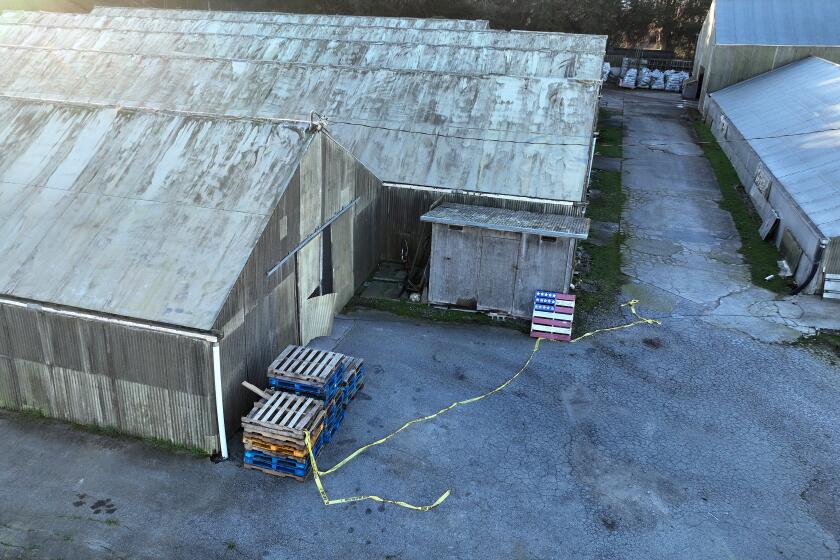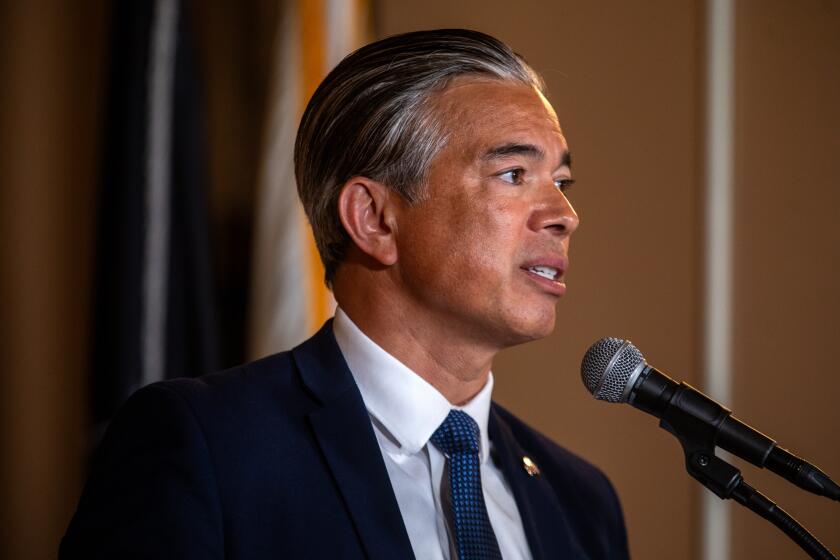DWP Tangle Could Impede Secession of Valley, Harbor
As residents who favor Hollywood’s breaking away from Los Angeles submitted petitions Wednesday in hopes of triggering a study of their proposal, new complications emerged in the review of secession plans for the San Fernando Valley and Harbor areas.
A consultant conducting the Valley and Harbor cityhood studies said legal advisors believe bond agreements would make it difficult to split the city Department of Water and Power between the new and old municipalities.
State law and bond agreements prohibit dismantling the agency if that would jeopardize the value of the bonds. In effect, those prohibitions would force the new Valley and Harbor cities to contract for DWP services until other arrangements are made, said Craig Hoshijima of the consulting firm Public Financial Management.
“We believe any attempt to divest the system would have a negative impact,” Hoshijima told the Local Agency Formation Commission, which hired the consultant to conduct the studies.
The new cities could strike joint operating agreements with Los Angeles to operate the DWP, in the same way that Burbank, Glendale and Pasadena operate Burbank Airport. But that could not happen until the new cities have elected city councils, Hoshijima said.
LAFCO must come up with an operating plan for the first three years of cityhood in the event secession is approved by voters. LAFCO members said the utilities issue could complicate that plan.
Gordon Knopp, an alternate to the commission, said the fledgling cities would have no guarantee that, after three years, they could obtain services from the DWP at a fair price. He also said the DWP runs the risk of losing a huge portion of its customer base.
“This whole issue is a tough one,” said Knopp, a West Hills resident who is president of the Las Virgenes Water Board. “I can’t see us allowing a situation that will likely result in big problems down the road.”
Larry Calemine, the commission’s executive director, said he does not see a problem with requiring the new cities to contract for water and power for as long as three years. The new cities could later negotiate a different deal, including a joint operating agreement, he said.
Valley secessionists would prefer to have some form of co-ownership or joint operation at first, but are willing to work with whatever LAFCO determines is feasible, said Richard Close, chairman of the secession group Valley VOTE.
“What we want is sufficient water at a fair price, which we have a legal right to,” Close said.
Another complication emerged Wednesday for the backers of cityhood for the San Pedro and Wilmington area. To include the harbor area’s state tidelands within the boundaries of a new city, the secessionists must get approval from the State Lands Commission.
Andrew Mardesich, president of the pro-secession Harbor Study Foundation, said Wednesday that his group has had trouble getting data from the city and other sources to complete its application to the state, delaying any decision.
“Unfortunately, it’s a very complicated, convoluted and difficult thing,” Mardesich told the Local Agency Formation Commission.
Hoshijima told the panel that the city has responded to 45% of the requests for data required to determine financial viability.
The commission meeting was interrupted Wednesday by the showy entrance of the Hollywood secessionists who delivered to the panel 38,000 signatures that they hope will trigger a cityhood study for their area as well.
Backed by a band playing “Hooray for Hollywood,” and accompanied by 30 adults and children carrying balloons and pompoms, Hollywood VOTE President Fares Wehbe presented three boxes of petitions to the commission.
“This is about creation of a new, smaller Los Angeles that is more dynamic and more responsive to the needs of its residents,” Wehbe told the commission after riding from Hollywood in a convoy of cityhood backers.
The commission has 30 days to determine whether 19,600 of the signatures are valid, the minimum requirement for triggering a cityhood study.
More to Read
Start your day right
Sign up for Essential California for news, features and recommendations from the L.A. Times and beyond in your inbox six days a week.
You may occasionally receive promotional content from the Los Angeles Times.







